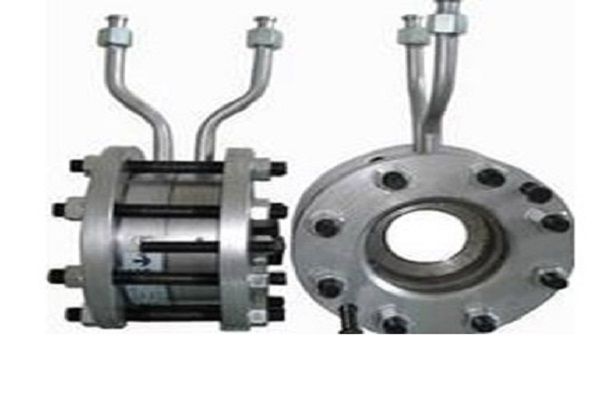
Engineers have to overcome various challenges in their facilities when it comes to measuring water, liquids, steam, and gases accurately. These challenges include tight spaces, corrosive and volatile materials, wet gases, multiple pump inputs, and other infrastructure issues.
In order to meet process requirements and project goals, engineers often have to reduce their accuracy expectations or the reliability of their measurements in order to meet the cost associated with installation and maintenance of piping and structural support.
The best solution for addressing these issues is a differential pressure flow meter (DPFM).
Differential Pressure Flow Meters: What Are They?
Differential pressure flow meters are used for measuring the flow of liquid, steam, or gas in pipes. Bernoulli's principle determines how much pressure the fluid can exert by determining the speed of the fluid.
Bernoulli's principle defines the relationship between the velocity and the pressure of a fluid, which allows differential pressure meters based on the principle to provide more accurate, reliable readings than many alternatives.
Accuracy, stability, and flexibility are the hallmarks of differential pressure flow meters
Engineers need differential pressure flow meters that provide versatility and long-term reliability, while minimizing maintenance and operating costs.
What are differential pressure flow meters?
By introducing a constriction or obstruction in the pipe that creates a pressure drop, DP flow meters can precisely measure the flow of fluid within that pipe. Pressure drops become more significant as the flow of the pipe increases. The result is an almost immediate response to pressure changes, regardless of flow velocity and other characteristics.
Differential pressure meters: elements
The differential pressure flow meter consists of three key elements that work together.
Primary element - A DP meter can be designed with a variety of options and designs. Averaging pitot tubes, an integral flow orifice (IFO), and wedges are all options depending on the size and flow rate of the line. To decide which primary element to use, engineers must consider the advantages of each (such as greater process control, multiple mounting configurations, ease of installation, maintenance costs, and reduced permanent pressure loss).
The differential pressure transmitter for flow measurement is considered the secondary element, and it measures differential pressure flow. The flow computer might include temperature and static pressure inputs.
Some DP meters include tertiary elements. Gas chromatographs and temperature transmitters are examples of tertiary elements.
Differential pressure meters offer many benefits
The following benefits can be gained by engineers who use differential pressure meters:
It is possible to measure differential pressure accurately despite disruptive turbulence and a wide range of flow characteristics with differential pressure meters. In spite of challenging flow conditions or variations in flow conditions, they maintain accuracy and consistency of readings.
A McCrometer V-Cone DP meter is self-conditioned. Due to this, it can tolerate turbulent flow with minimal or zero straight-run requirements, unlike other DP meters that need some clean, laminar flow ahead of the meter.
Due to their lack of movable parts, some differential pressure flow meters require less maintenance than orifice-plate or ultrasonic meters.
Facility managers and other stakeholders don't even have to recalibrate some of these systems, so routine maintenance is not necessary.
DP meters can be fully customized to meet customer requirements, such as turndown, total pressure loss, and valve size for optimal performance.
Flexible installation – Differential pressure meters can be pre-configured for different applications (e.g., across filters, backflow preventers, and heat exchangers) and ready for installation, thus reducing installation costs and time and improving productivity.

Reduced footprint – DP flow meters are built to fit into a compact space and reduce piping requirements. By doing so, you save space and money configuring piping and support systems while maintaining accuracy, and any critical space and weight requirements for platform-mounted applications are also reduced.
Because differential pressure meters provide a consistent, even flow around transitions, they ensure less permanent pressure loss.
There are minimal straight-pipe requirements - While alternative meters require additional piping and structure support, some DP meters can reduce both upstream and downstream pipe requirements.
Differential Pressure Flow Meters: When to Use Them
A differential pressure meter's measurement principle is standardized in ISO 5167 and ensures accurate, reliable results, which is why engineers choose them.
Furthermore, DP meters can be used in both low- and high-temperature applications, large pipes, and are easy to maintain. Since they're made from a variety of materials, they're suitable for a wide variety of gasses and liquids.
The flow element applied to differential pressure meters can vary in appearance depending on the flow element used. Differential pressure meters have a low total cost of ownership because they can be welded.